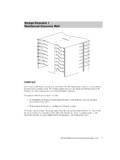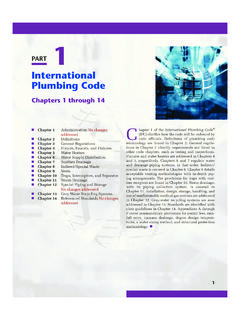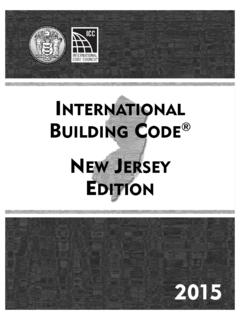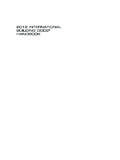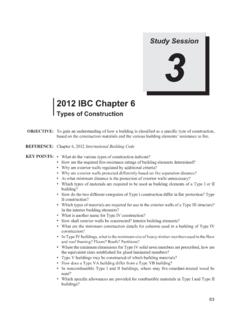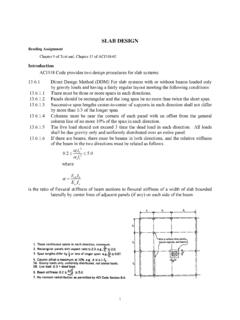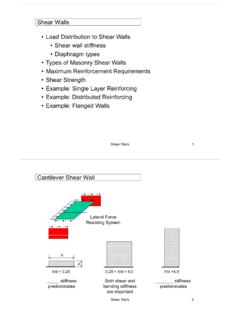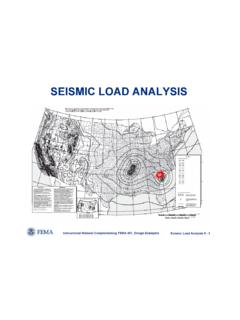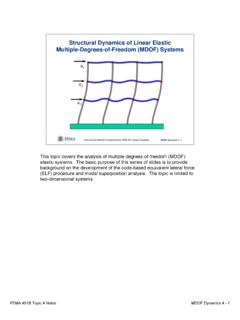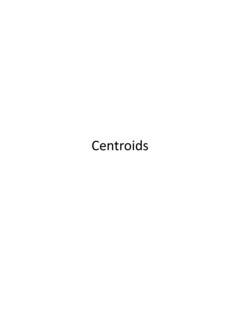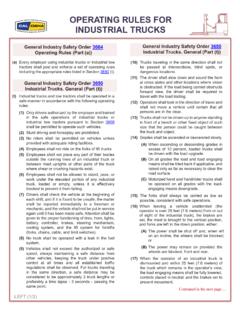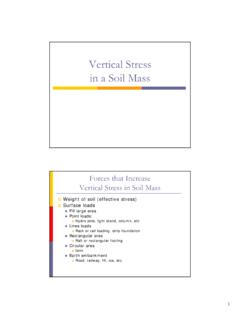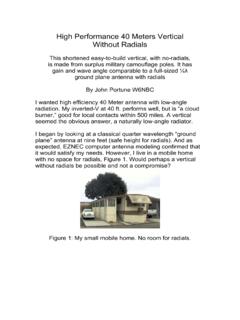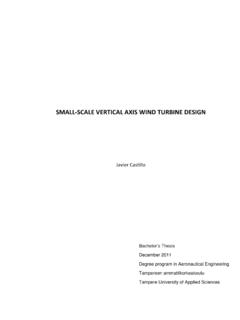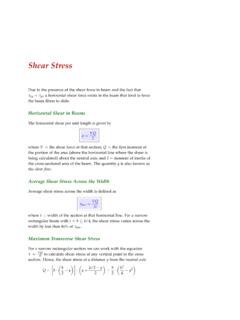Transcription of Structural Load Determination: 2018 IBC® and ASCE/SEI 7-16
1 5 CHAPTER 2 load IntroductionIn accordance with IBC , Structural members of buildings and other structures must be designed to resist the load combinations of IBC , or load combina tions that are specified in Chapters 18 through 23 of the IBC, which contain provisions for soils and foundations, concrete, aluminum, masonry, steel and wood, must also be considered. The Structural elements identified in ASCE/SEI Chapters 12, 13 and 15 must be designed for the load combinations with overstrength of ASCE/SEI or These load combina tions and their applicability are examined in Section of this contains the load combinations that are to be used when strength design or load and resistance factor design is utilized.
2 load combinations using allowable stress design are given in IBC Both sets of combinations are covered in Sections and of this publication, respectively. The combinations of IBC or can also be used to check overall struc tural stability, including stability against overturning, sliding and buoyancy (IBC ).It is important to understand the difference between permanent loads and variable loads and their role in load combinations. Permanent loads, such as dead loads, do not change or change very slightly over time. Live loads, roof live loads, snow loads, rain loads, wind loads and earth quake loads are all examples of variable loads.
3 These loads are not considered to be per manent because of their inherent degree of variability with respect to time (see the definition of Loads in IBC 202).According to IBC , load combinations must be investigated with one or more of the vari able loads set equal to zero. It is possible that the most critical load effects on a member occur when one or more variable loads are not and contain load combinations for strength design and allowable stress design, respectively. The load combinations are essentially the same as those in IBC and with some exceptions. Differences in the IBC and ASCE/SEI 7 load combinations are covered in the following sections.
4 In ASCE/SEI 7 16, the load combinations with seismic load effects have been removed from ASCE/SEI Chapter 12 and placed in ASCE/SEI Chapter 2 in sections sepa rate from the basic load to examining the various load combinations, a brief introduction on load effects is given in Section load EffectsThe load effects that are included in the IBC and ASCE/SEI 7 load combinations are summa rized in Table More details on these load effects can be found in those documents, as well as in subsequent chapters of this publication (see the Notes column in Table , which gives spe cific locations where more information can be found on the various load effects).
5 02_Fanella_Chapter 02 526/07/18 7:15 PM6 Chapter 2 load Combinations Using Strength Design or load and Resistance Factor DesignThe basic load combinations where strength design or, equivalently, load and resistance factor design is used are given in IBC and summarized in Table These equations establish the minimum required strength that needs to be provided in the members of a building or struc load combinations apply only to strength limit states; serviceability limit states for deflec tion, vibration, drift, camber, expansion and contraction and durability are given in Appendix C of ASCE/SEI load factors were developed using a first order probabilistic analysis and a broad survey of the reliabilities inherent in contemporary design practice.
6 The equations in Table are meant to be used in the design of any Structural member regardless of material in conjunction with the appropriate nominal resistance factors set forth in the individual material specifications. Refer ences and provide information on the development of these load factors along with addi tional background loads are determined by multiplying nominal loads (that is, loads specified in Chapter 16 of the IBC) by a load factor, which is typically greater than or less than Earthquake and wind load effects are an exception to this: a load factor of is used to determine the maximum effects from these loads because they are considered strength level Summary of load EffectsNotationLoad EffectNotesDDead loadSee IBC 1606 and Chapter 3 of this publicationDiWeight of iceSee IBC 1614, Chapter 10 of ASCE/SEI 7 and Chapter 4 of this publicationESeismic load effect defined in ASCE/SEI IBC 1613, ASCE/SEI and Chapter 6 of this publicationEmSeismic load effect including over strength defined in ASCE/SEI IBC 1613.
7 ASCE/SEI and Chapter 6 of this publicationFLoad due to fluids with well defined pressures and maximum heights FaFlood loadSee IBC 1612, Chapter 5 of ASCE/SEI 7 and Chapter 7 of this publicationHLoad due to lateral earth pressures, ground water pressure or pressure of bulk materialsSee IBC 1610 and Chapter 3 of this publication for soil lateral loadsLRoof live load greater than 20 psf and floor live loadSee IBC 1607 and Chapter 3 of this publicationLrRoof live load of 20 psf or lessSee IBC 1607 and Chapter 3 of this publicationRRain loadSee IBC 1611 and Chapter 3 of this publicationSSnow loadSee IBC 1608, Chapter 7 of ASCE/SEI 7 and Chapter 4 of this publicationTCumulative effects of self straining forces and effectsSee ASCE/SEI and due to wind pressureSee IBC 1609.
8 Chapters 26 to 31 of ASCE/SEI 7 and Chapter 5 of this publicationWiWind on ice loadSee IBC 1614, Chapter 10 of ASCE/SEI 7 and Chapter 4 of this publication02_Fanella_Chapter 02 626/07/18 7:15 PMLoad Combinations 7 load combinations are constructed by adding to the dead load one or more of the variable loads at its maximum value, which is typically indicated by a load factor of Also included in the combinations are other variable loads with load factors less than ; these are companion loads that represent arbitrary point in time values for those loads. Certain types of variable loads, such as wind and earthquake loads, act in more than one direction on a building or structure, and the appropriate sign of the variable load must be considered in the load seismic load effect, E, that is to be used in IBC Equation 16 5 ( ASCE/SEI load combination 6) is equal to the following (see ASCE/SEI ).
9 =+EEEhvwhere Eh = horizontal seismic load effect defined in ASCE/SEI QE= Ev = vertical seismic load effect defined in ASCE/SEI = = redundancy factor defined in ASCE/SEI QE = effects of horizontal seismic forces applied to the structure SDS = design spectral response acceleration parameter at short periodsThus, IBC Equation 16 5 ( ASCE/SEI load combination 6) can be written as follows: SDFQfLHfS( ) +++ +++ In IBC Equation 16 7 ( ASCE/SEI load combination 7), the seismic load effect that is to be used is = EEEhv (see ASCE/SEI ). Therefore, this equation can be written as follows: SDFQH( ) ++ + Table Summary of load Combinations Using Strength Design or load and Resistance Factor Design (IBC )IBC Equation Combination16 (D + F)16 (D + F) + (L + H) + (Lr or S or R)16 (D + F) + (Lr or S or R) + 1.
10 6H + ( 1L or )16 (D + F) + 1. 0W + 1L + 1. 6H + (Lr or S or R)16 (D + F) + 1. 0E + 1L + 1. 6H + 2S16 + 1. 0W + 1. 6H16 (D + F) + 1. 0E + 1. 6H 1 = 1 for places of public assembly live loads in excess of 100 psf and for parking garages = for other live loads 2 = for roof configurations (such as sawtooth) that do not shed snow off the structure = for other roof configurations02_Fanella_Chapter 02 726/07/18 7:15 PM8 Chapter 2 According to the first exception in ASCE/SEI , the vertical seismic load effect, Ev, can be determined from the following equation, which is applicable to structures that have significant response to vertical ground motion.
